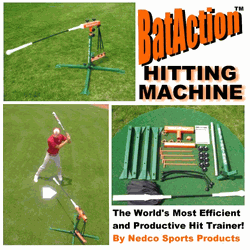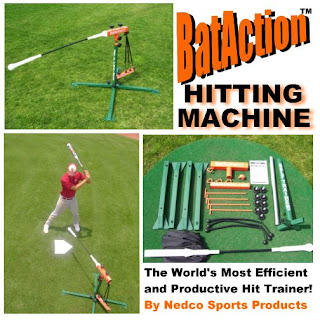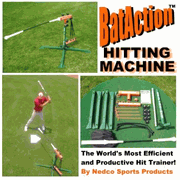By
Larry Cicchiello If you don't know anything about an opposing pitcher, watch him closely and you may possibly get to know a lot about him very quickly. Beating the pitcher is plain and simply, a battle.
Pay attention to what he does well and what he does NOT do well.
You may know this before he takes the mound that day and if not, you can certainly learn much about him by watching him for an inning or so. Sometimes you can learn a lot after only one batter.
Good pitchers will stay awake at night trying to figure out how to get good hitters out.
Just like the pitcher is looking for your strengths and weaknesses as a hitter, you too better be looking for his strengths and weaknesses!
Pitchers at higher levels of play use pitching charts to get to know tendencies that hitters have. Why can't you, as a hitter, at least keep a mental chart of the pitcher's tendencies?
Some Very Important Things You Should Be Looking For
Look for where his release point is. Quite often pitchers have different release points for different pitches and you may know what pitch he's throwing before he releases the ball.
Time his pitches with your swing. You should have a good idea as to how fast the pitcher is before you face him.
Is the pitcher always throwing a first pitch fast ball all the time?
Does he lean back more toward second base to get some extra speed on his fast ball?
Does he slow down his windup at the last second when he's throwing a change up?
On the other hand, does he speed up his windup too much when throwing a change up because he is trying too hard to disguise it?
Does he always throw the curve ball with 2 strikes?
Is the first pitch to each batter too "fat" and an easy pitch to hit?
Is the pitcher always throwing a breaking ball after he shakes off his catcher's signal? (This tells you the catcher is not ever putting down the breaking ball as his first signal and then when the pitcher shakes off the catcher, you know the pitch will be his breaking ball)
Does the pitcher raise his front shoulder higher when throwing the fastball to try to throw it faster?
Is he ALWAYS pitching low and away and not using both sides of the plate by occasionally coming inside?
Does he drop his arm slot down a little to get more lateral movement on his breaking ball?
If you're serious about being a successful baseball hitter, you have to be thinking all the time.
While on the bench, sit next to a very good hitter and talk about the opposing pitcher throughout the game.
Baseball hitting is tough so try to get every possible advantage. Of the hundreds of baseball tips on hitting you may hear about, keep this one near the top of your list. It's not a complicated technique but merely requires you to be observant.
Remember, the pitcher is thinking of anything and everything he can do to get you out.
As a baseball hitter, you should be thinking of anything and everything you can do to have a successful at bat.
You will be very pleased with yourself if you have observed that the pitcher has started five straight hitters off with a first pitch fast ball. Then you get up, see a first pitch fast ball, and hit a seed into one of the gaps!
Even if you do not know anything at all about a pitcher, you can learn his strengths, weaknesses and overall tendencies VERY QUICKLY!
Beating the pitcher requires clever use of your mind as well as your body.
The pitcher is using both his brain and his arm to beat you and you must do the same if you truly want to be a successful baseball hitter.
Larry Cicchiello is the author of the very informative book "Excellent Baseball Coaching:30 Seconds Away." He is unique in that his site offers visitors several FREE TIPS that are straight from his book. Baseball tips on hitting, baseball pitching tips, baseball fielding tips, baseball coaching drills, base running tips, baseball coaching drills and more. Your baseball "help desk" will be open 7 days a week, 24 hours a day, 365 days a year and very user friendly. Larry invites you to check out his FREE TIPS and then you can decide if Larry is a pretender or a very serious contender. Very shortly, you will be raising a few eyebrows!
You can visit his website at
http://www.larrybaseball.com/Article Source:
http://EzineArticles.com/?expert=Larry_Cicchiello













